Wildlife Department nurses polythene-ingested elephant to heath
The Giritale Wildlife Department nursed to health an elephant that was found to have consumed vast amounts of polythene.
The elephant was found lying in a swamp at Manampitiya, Nelumwila on January 29.
The Giritale Wildlife Department said the elephant was moved out of the swamp with a backhoe and treated with 30 bottles of saline.
Giritale Wildlife Department veterinary surgeon said the elephant had discharged 40 kilogrammes of polythene, after being given 40 litres of water and 3 litres of coconut oil.
http://www.dailynews.lk/2017/02/07/local/106999/wildlife-department-nurses-polythene-ingested-elephant-heath?page=7
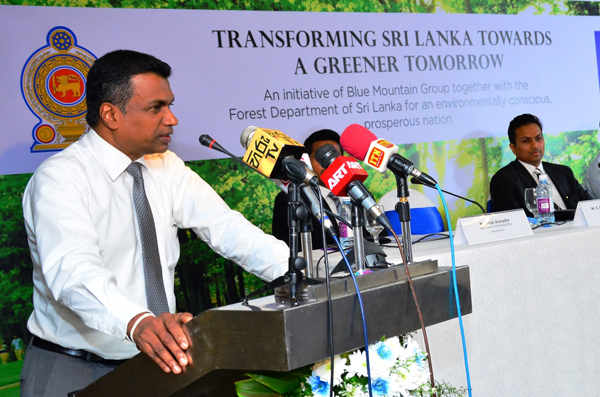
Blue Mountain Group reinforces its commitment to the planet with new national reforestation project – ‘Transforming Sri Lanka towards a greener tomorrow’
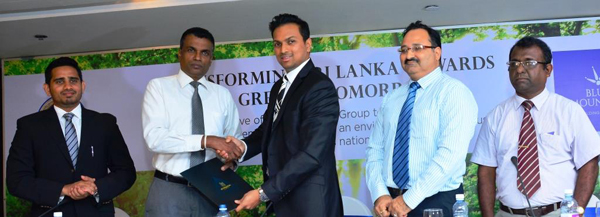
The Blue Mountain Group (BMG) recently reiterated its commitment to protecting the planet and spearheading national reforestation efforts by initiatingthe ‘Transforming Sri Lanka towards a greener tomorrow’ project.Conceptualized by BMG as part of its long-term efforts to be a responsible corporate citizen, the project will be conducted in partnership with the Forest Department of Sri Lanka to ensure the reforestation of 125 acres of land in Wilpotha over the next ten years.
The official partnership agreement between both parties was signed by Dr.Hiran Hettiarachchi– Group Chairman, Blue Mountain Group and S.A.A Sathurusinghe– Director General of the Forest Department, in the presence of Government officials, the management and staff from both organizations and representatives from the planting zones.
Commenting on the partnership, Dr.Hiran Hettiarachchi (MBBS-Colombo & MBA-Australia), Group Chairman of BlueMountain said: “The Blue Mountain Group is the first private-sector company in the country to partner with the Forest Department to implement an environmental project of this scale and magnitude. The project was conceptualizedto assist and support national reforestation efforts and is a non-commercial initiative that we hope will to protect our planet and the environment. We are honoured to join hands with the Forest Department, to make our dream for a greener Sri Lanka a reality.”
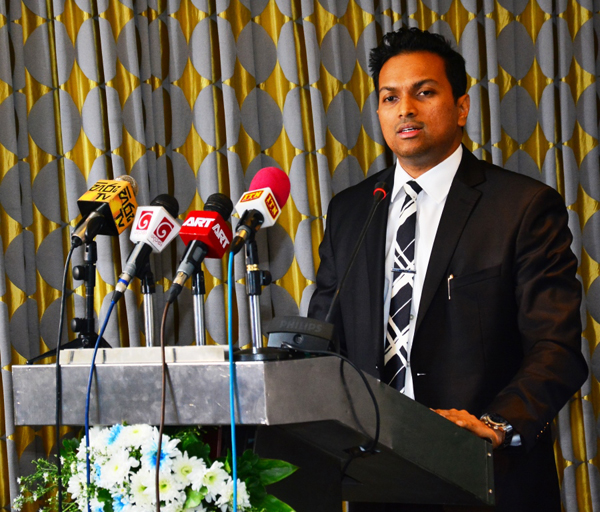
‘Transforming Sri Lanka towards a greener tomorrow’ was established in Wilpotha (situated in the Puttalam district), in keeping with national forest enhancement strategies. The project will help to safeguard some of Sri Lanka’s endangered forest sites, and in doing so will protect the rich biodiversity of flora and fauna that these unique habitats support. The project will ensure the removal of invasive plants and will facilitate the planting of a variety of native plant species, especially those that have been identified as endangered. The project team will also attempt to counter deforestation that is caused by illegal felling, fires and farming – all of which cause soil erosion and have a detrimental impact on these forest areas and the environment at large.
The project will have a multitude of environmental benefits whilst ensuring effective biodiversity conservation and habitat management on a large scale in key forest zones. The initiative will also support eco-tourism, and will attract more travellers to the Wilpotha Reserve, who will be able to see a rich variety of plants, wildlife and birds due to the continued protection of their natural habitat.
Additionally, the project will also play a significant role in contributing to national carbon sequestration efforts, which are part of a long-term plan to reduce the country’s overall carbon footprint.

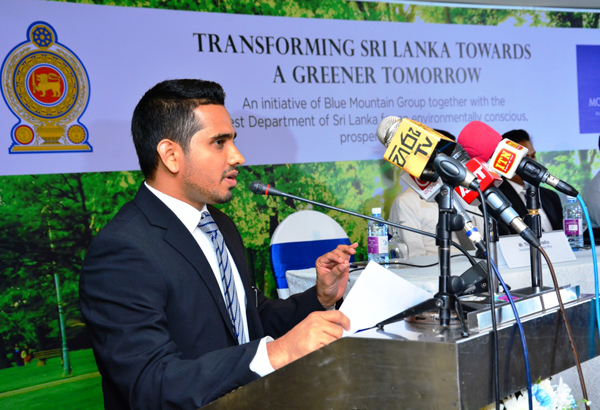
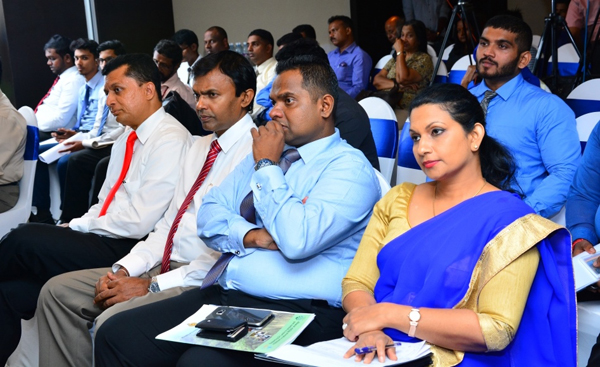
http://www.dailymirror.lk/article/Blue-Mountain-Group-reinforces-its-commitment-to-the-planet-with-new-national-reforestation-project-Transforming-Sri-Lanka-towards-a-greener-tomorrow–125197.html
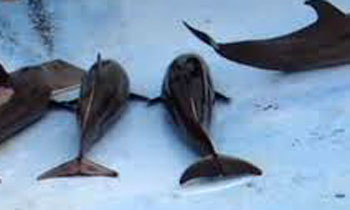
Nine fishermen arrested for killing 12 dolphins
Nine fishermen were arrested by the Trincomalee Anti-Corruption Unit yesterday for killing 12 dolphins, Police said. The suspects, residents of Trincomalee, were arrested with two boats following a tip off. Police said they had received information that several dolphins were being held captive at a buoy in the inner Trincomalee harbor. The suspects, between the ages of 44 and 76, were arrested with fishing equipment and are to be produced to the Trincomalee Magistrate Court today. See more
Source – 09/03/2017, Dailymirror,See more at: http://www.dailymirror.lk/article/Nine-fishermen-arrested-for-killing-dolphins-125196.html#sthash.OHcSxoiR.dpuf

700 to 1,000 leopards in Sri Lanka; researcher
There are about 1,000 leopards across Sri Lanka and they are a keystone species in ecological parlance of the country, a wildlife researcher has said.
An article published on the website of multimedia publication ‘Motherboard’ under the title ‘Saving Leopards Is Hard, Especially with All the Landmines’ by Smriti Daniel, said leopards are more important to the ecosystem than their numbers would suggest.
Wildlife researcher Anjali Watson has said that leopards are an “umbrella species” – because they are wide ranging animals, protecting them would mean protecting many others in the same territories.
Source – 04/01/2017, Dailymirror, See more at: http://www.dailymirror.lk/article/-to-leopards-in-Sri-Lanka-researcher-121683.html#sthash.rpmtwzhK.dpuf

‘Displaced’ wild elephants evicted from Hambantota Port
Officers from the Hambantota Office of Department of Wildlife Conservation (DWC) launched an operation on Monday evening to evict a herd of wild elephants that had entered the premises of the Hambantota Magampura Port.
The operation lasted from 5.30pm to about 9.00pm and DWC officers were able to chase away some 15 elephants who had made their way into the port.
Officials from the China Harbor Engineering Corporation had told the DWC that about 40 wild elephants were roaming around the port premises and were causing damage to property on a daily basis.
Environmentalists however, point out that the main reason for such incidents is the continued reluctance on the part of officials to declare a separate reserve for wild elephants in the Hambantota region who have become displaced due to the construction of the Magampura Port and the Mattala Airport. They note that the former regime ignored the recommendation to declare an elephant reserve despite it being explicitly stated in the Enviornmental Impact Assessments (EIAs) of the two projects. The tragedy is that the present Government is adopting the same approach as the former, they notee. This has resulted in about 350 wild elephants in the region being evicted from their natural habit which has been taken over for development work.
By Rahul Samantha Hettiarachchi in Hambantota
Source – 08/03/2017 , Times Online, See more at – http://www.sundaytimes.lk/article/1018158/displaced-wild-elephants-evicted-from-hambantota-port
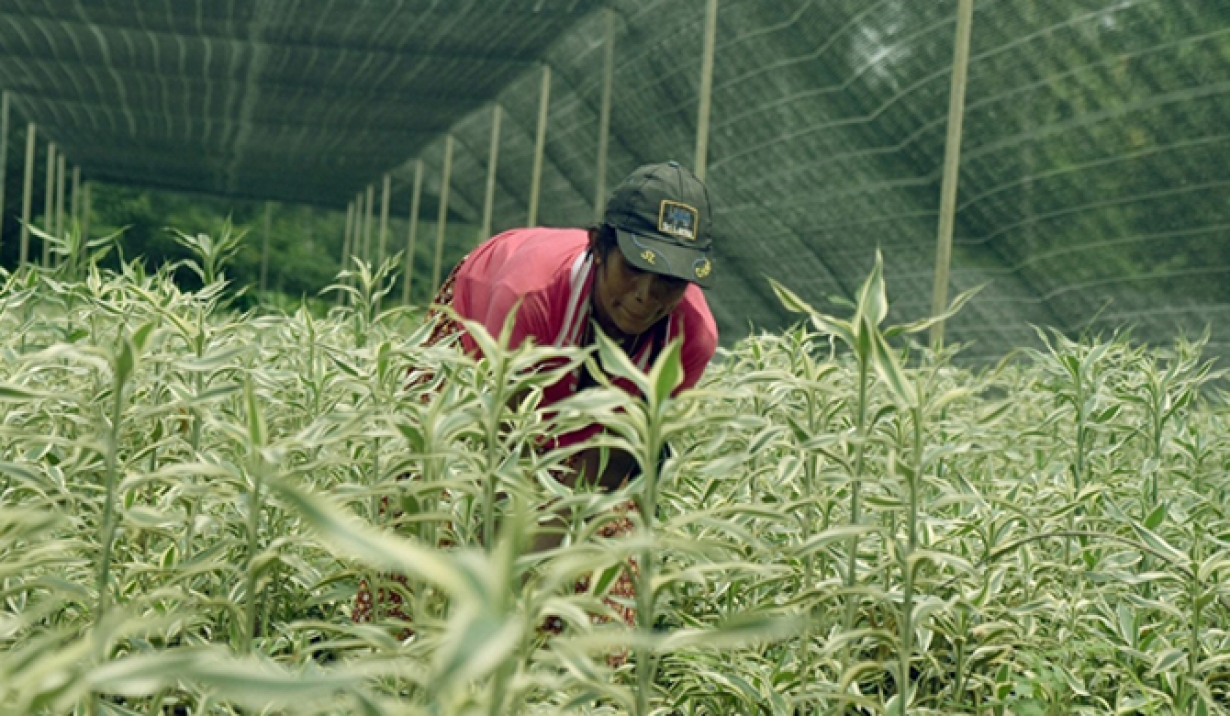
Netherlands assists SL to improve horticultural industry
The Netherlands has the knowledge, technology and capacities to support Sri Lanka with establishing an efficient and professional horticultural industry.
Over the years agriculture has become a priority for the Dutch Embassy in Colombo. An agricultural division has been established at the embassy and many activities have been organised to strengthen the agricultural cooperation between the two countries, Sri Lanka Foreign Ministry revealed.
The Netherlands is the world`s leading supplier of flowers, plants and trees. The Dutch horticultural sector is a global trendsetter, supplying markets all over the world, as well as being a leading innovator in greenhouse technology.
The Netherlands team in Colombo is willing to assist Sri Lanka whenever it requires more information about specific sectors or doing business in Sri Lanka, foreign ministry official said.
Netherlands Embassy in Colombo has prepared a Business Opportunity Report, to provide further insight into the opportunities in the horticultural sector and specific information for companies that are interested in business opportunities in this sector in Sri Lanka.
Also the launch of the new direct KLM route between Amsterdam and Colombo will make it easier to transport horticultural products to both countries.
Source – 07/03/2017,Sri Lanka Mirror, See more at – http://srilankamirror.com/news/2189-netherlands-assists-sl-to-improve-horticultural-industry
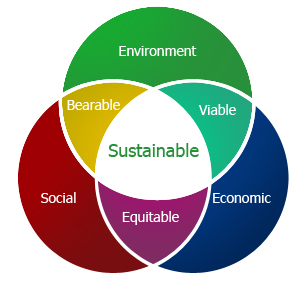
Issues of Social-Environmental Sustainability
By Riza Yehiya
Building boom in Sri Lanka today is primarily seen in the housing sector. This sector has opened up since the end of war, where the State driven housing are mainly for the poor and the private driven are mainly for the rich. Rich or poor, as human beings, their housing needs need to get the social-environmental sustainability basics right, in order to make sustainable societies. Failing which would make Sri Lanka become a much polarized society leading the rich to live in gated communities and the poor in newly built ghettos, segregating one from the other.
Our communities were more socially and environmentally sustainable in the 1940s than now. The many post-independence developments in the sector, which only concentrated on giving a better built environment to the masses, have failed to link them with their environment and society sustainably. This is one of the reasons attributed to influence social polarization. Current development trends seem to exacerbate this with potentials to polarize people based on rich/ poor segmentation without a middle class that cements the two together. The widening rich-poor gap and the thinning of the middle class segment in society can potentially undermine the economy and society altogether. Apart from this, those ‘poor’ who will live in high-rise apartments in the cities, their tendency to link with nature and society will become remote. Consequently, this may drive their stress levels to transform to irritations and then to conflicts in our conurbations. The onset of neoliberal economy in Sri Lanka would make the rich richer and poor poorer; the reflection of this economic model is visible in the emerging developments in Colombo and its suburbs.
Environmental sustainability
Environmental sustainability is the driver influencing development decisions in the country. The government advocates this as one of its stated goals of development in the country. It applies to all aspects of our life to ensure sustainability. Therefore, it is imperative that housing, the basic needs of the people, should be made available in the market with sustainability features that support long term sustainability.
Contrarily, the present market does not seem to supply sustainable housing that ensures social-environmental sustainability that links people with the built environment, nature and society. It seems ‘business as usual’ approach by the market does not recognize the need to connect people with nature and the need for the built environment to form a new ecology to ensure social-environmental sustainability. Instead, what is prevalent is greenwashing and meeting the triple bottom line of the project developer to maximize profit.
The current housing market is ambivalent, which on one hand applies ‘business as usual’ approach without any consideration whatsoever regarding ‘sustainability aspects’ and on the other adds up certain sustainability elements as marketing tools to increase sales. There is a lack of holism to produce sustainable housing to the people. Its supply chain is deficient and deficit in achieving sustainable results in terms of physical, social and environmental sustainability.
The application of Ecologically Sustainable Design (ESD) is usually confined to the design aspects more in the physical sense to achieve bioclimatic goals, but tends to lack holism to integrate the ‘Social’ (cultural, political, economic, psychological, community) and ‘Environmental’ (physical, built, ecological, technological) aspects of sustainability. This is a major deficit that makes the current practice ill equipped to address sustainability holistically. The way ESD is adopted in practice delivers only partial achievement of sustainability goals. Therefore, it often fails to address issues affecting sustainability that lie outside the areas concentrated on by prevailing sustainability practices. This is due to the absence of ecological knowledge and thinking, and an overarching ecological sustainability framework to address bioclimatic, social-environmental and sustainability aspects which link people with nature, built environment and society as constituents of the larger ecology.
The reason for this phenomenon may be the prevailing world view, in particular the ‘capitalist market economy’ that segments and atomizes people to understand them as ‘consumers’ and then target products and services to them to garner better profits. This transaction takes place in a compartmentalized and isolated form and in contradiction to the ecologies of society, economy, nature and the environment. This in turn inevitably affects social-environmental sustainability. Therefore, a paradigm shift that looks at the market from an ecological point of view is an imperative.
Our Common Future
The issues of sustainability are contingent upon ‘satisfying the needs of the present without undermining future needs’ as the Bruntland Commission proposed as a strategy in their report, ‘Our Common Future’ in 1987. Following this report, an array of tools and drivers of Legislative Environmental Controls, Economic Instruments, Environmental Taxes, Building Codes and Rating Systems were developed, culminating in evolving the Earth Charter. These instruments generally cover the gamut of sustainability in terms of: Respect and care for community life, Ecological Integrity, Social and Economic Justice and Democracy, Non-violence and Peace. However, translating these into broader practice is dominated by industry and market forces in terms of establishing sustainability benchmarks and, to a lesser extent, by State regulations that represent the interests of the people. Industry dominance and the influence of market forces have been selective in using sustainability drivers and tools that directly influence market profitability.
In the present housing market, ESD is adopted only as a marketing tool to add value to housing products to enhance sales and maximize profit. That too, only in the housing for the rich, but rarely the ESD is applied in the housing for the poor. The sale of a housing unit has become more like the sale of an automobile which concentrates on the intrinsic features of the product in isolation from the rest of the environment. However, housing as a product has to be fit for purpose, accommodating a human family that is part of the community, society and humanity. It has its ethos, values, cultures, links and connectivity, behaviour patterns dominating its private and public life, in private and public spaces respectively. It is linked to nature: the wider environment, and the built environment and technology that sustain it. Therefore, housing as a product to support basic human needs must satisfy all that is entailed to give the user the desired benefits by providing ‘creature comfort’, resource and economic sustainability, psycho-social sustainability through linking with community, people, nature, environment and society.
In the real business world, people’s wants and what the market supplies are not really matched. More often than not, people are not satisfied with the products that they buy due to their knowledge gap in making the right purchase decision or influence of coercive market strategies stimulating their subliminal force prompting to make a decision. Therefore, in the real transactions, only when purchase decisions are made is when customers realize the follies of their ill informed decision. Customer ignorance is a common denominator in the decision making process. Therefore, to protect them, they need to be availed with better awareness and information of products. Especially with regard to house purchase decisions, customers need awareness and relevant information database and specifications that direct them to make informed decisions about the house of their choice that contribute to long-term sustainability.
Housing Problem
Sri Lankan housing was traditionally taken care of by the vernacular self-builds which transformed to State house building on mass-scale during the 60s and 70s which stagnated due to conflict in the country. Currently, Sri Lanka in the threshold of post-industrial society, the housing industry has transited from vernacular self-builds to centrally planned mass housing to suit the social and economic models of society. This transition not only changed the building design and technology, but also the morphology of towns and cities from natural ecosystem to a new environment requiring a new ecology of its own.
Industrialization, urbanization and the economic models determined the shape of the society to come. The role of the government which represents the people is reduced by the power of the market forces which determine values, cultures, wants and needs of people influenced by consumerism and globalization. These unfettered powers determine price, quality, quantity, supply and demand in the market in which the State has no direct leverage. Artificial demand creations for the purpose of profit maximization and social segmentation to derive market segmentation have unsustainably pushed cost and quality of products being served. Growing population, limited choices for house selection, limits of affordability and social mobility compounded by lack of public housing is causing ‘housing stress’. Housing stress will be felt by people even if there were surplus houses in a given society due to the manipulations of the market forces. We may come across a situation of a mass of empty houses on one hand and on the other a permutation of homeless masses paradoxically.
The way the sustainability agenda is implemented at present is through different tiers in the State. The producers achieve sustainability benchmarks in respect to their product/s more in isolation than by being part of a larger framework of ecological sustainability that the products tend to influence positively or negatively. These are endorsed by State and/or industry-specific institutions that are responsible for implementing the sustainability agenda. Apart from this, there are instruments that govern the sustainability agenda both through industry-specific and State agencies. Most of these agencies implement them more in isolation of the other aspects and limited to areas like environmental pollution, ecological disruption, socio-economic sustainability and so on. For example, it is common sense that development decisions are hinged on economic bottom lines as opposed to sustainability. Any development project whether public or private driven, development decision makers or project proponents and their respective development partners or project approving agencies, their fundamental questions at project formulation are economic feasibility, economic sustainability and profitability. Here, neither the project proponent nor the project approving agencies hinge their decisions on ecological sustainability that is profitable on multiple fronts satisfying all stakeholders in the society.
Legislative environmental
controls
These largely are more focused on controlling pollution through regulatory instruments. These are preventative measures that attempt to control pollution by regulation, setting standards, incentives, solutions and other parametric requirements to comply with pollution prevention. These measures are implemented by State agencies that superintend pollution control directly and indirectly. These are not comprehensive enough as singular preventative tools. History testifies that in the case of most major environmental accidents, preventative measures have failed and the environmental cost of damage is disproportionately higher that the punitive fines imposed on perpetrators. These control systems play only one part in protecting the environment, but are not all-encompassing as a sustainability driver.
Historically, building codes emerged as drivers to ensure public health and safety in buildings and construction. Currently most of the prevailing building codes are outdated, but are applied all over the world as ‘business as usual’ without any major changes to make them relevant to sustainability. For example, most of the developed countries that advocate sustainability are yet to evolve a country specific uniform sustainability building code that encompass not only the energy and resource efficiency factors, but also social-environmental factors enforcing designed response.
Presently, most of the building codes seem to be barriers to sustainable practices. This is particularly seen during project formulation, when potential developers consider complying with building codes as a fundamental requirement for project approval, such as seeking approval for a building plan. The project proponent is confronted by the municipal building regulations which are codified much before sustainability issue came to the forefront of discussion. Therefore, they are forced to comply with the present codes without review to accommodate sustainability. Hence, the status quo does not fully support genuine sustainability goals. This force developer to initiate design process complying with a code based on unsustainable – or not fully sustainable – development practices. Regarding this Professor Joo Bay, (2010) notes in ‘Towards A Fourth Ecology’ that: “For a poor nation, social sustainability may warrant a much higher weighting, but for the rich nations, addressing climate change (with current ESD directions and carbon trading policies) and maintenance of status quo is a bigger issue.”
Will the next generation housing be socially and environmentally sustainable in Sri Lanka?
Source – 09/02/2017.Ceylon Today, See more at – http://www.ceylontoday.lk/print20170101CT20170331.php?id=14825
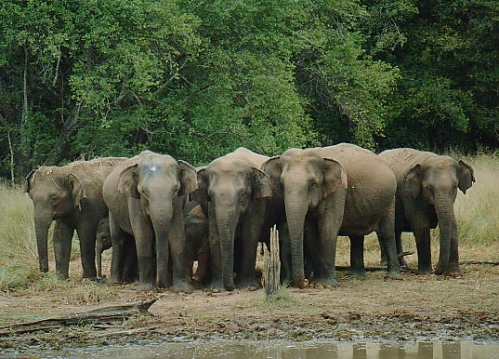
Wild jumbo threat in Ampara
By Our Ampara Correspondent
The villagers of Ashraff Nagar in the Addalaichenai DS Division staged a march on Sunday to create awareness on the threats they faced from wild elephants.
The participants, mostly farmers, shouted out saying that their livelihood has been affected due to the wild elephants.
The villagers called on the relevant authorities to erect electric fences, fix street lights, and provide them with adequate protection from the wild elephants.
The villagers said that the areas of Ashraf Nagar, Sambu Nagar and Hira Nagar were the most dangerous and vulnerable to wild elephants that are known to roam these areas in sizeable numbers. They claim that owing to this threat they are unable to move freely because of the tense situation. As a result most of them are confined to their homes.
They added that on many occasions they are forced to take shelter with relatives or friends owing to the threat from wild elephants.
They appealed to the authorities to look into their problems and take appropriate action to protect them from wild elephants so that they could lead a peaceful life.
Source – 07/03/2017,Ceylon Today, See more at -http://www.ceylontoday.lk/article20170101CT20170331.php?id=4298
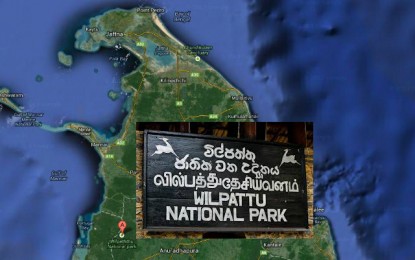
Special tourism zone from Thabbowa to Wilpattu
Government has decided to establish a special tourism zone from Thabbowa to Wilpattu, said the State Minister of Skill Development and Vocational Training Palitha Range Bandara.
He said that, the government under this program is expected to create at least 15, 000 direct and indirect job opportunities.
The project will be implemented with long and short term plans.
He further added that the initiative work of the Thabbowa economic zone has already commenced and President Maithripala Sirisena has also paid special attention in this regard.
Source -06/03/2017, Ceylon today . See more at – http://www.ceylontoday.lk/article20170101CT20170331.php?id=4293

Rules flouted at Yala National Park
Many Safari Jeep drivers operating inside the Yala National Park are openly flouting regulations put in place by authorities to ensure the safety of animals and tourists.
Drivers, eager to please tourists, increasingly engage in rec klesss behaviour that not only harass the animals, but also putting the lives of tourists at risk.
We observed several such incidents including driving vehicles at high speed, taking the jeeps off designated pathways, climbing atop vehicles and the obstruction of animals.
Authorities imposed strict regulations, including speed limits on vehicles inside the sanctuary after a leopard was killed by a speeding vehicle on August 28. 2015.
However recently many safari jeep drivers, have been flouting the regulations.
While less than 125 safari jeeps were in operation during the war years, today over 700 jeeps operate in the same area.
The lack of a proper mechanism to regulate the entry of jeeps entering the reservation has created further problems, including traffic jams, inside the park.
Officials also say most jeeps operate in only one section of the park despite the park being divided into five sections.
Director General of the Department of Wildlife Conservation (DWC), W.H.D. Pathirathna said there were plans to divide the Yala forest into three separate sections and restrict entry of vehicles to only one section. He added however, this would take time as it required a large investment.
In the meantime, authorities have stepped up patrols inside the park to locate and ban jeeps which flout park regulations.

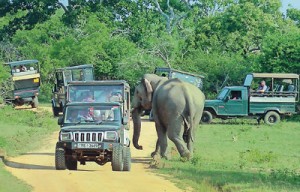
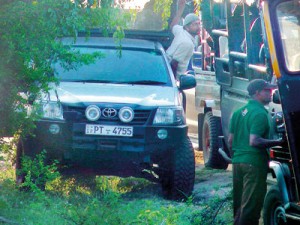
Source – 05/03/2017 , The Sunday Times ,See more at – http://www.sundaytimes.lk/170305/news/rules-flouted-at-yala-national-park-231524.html
















